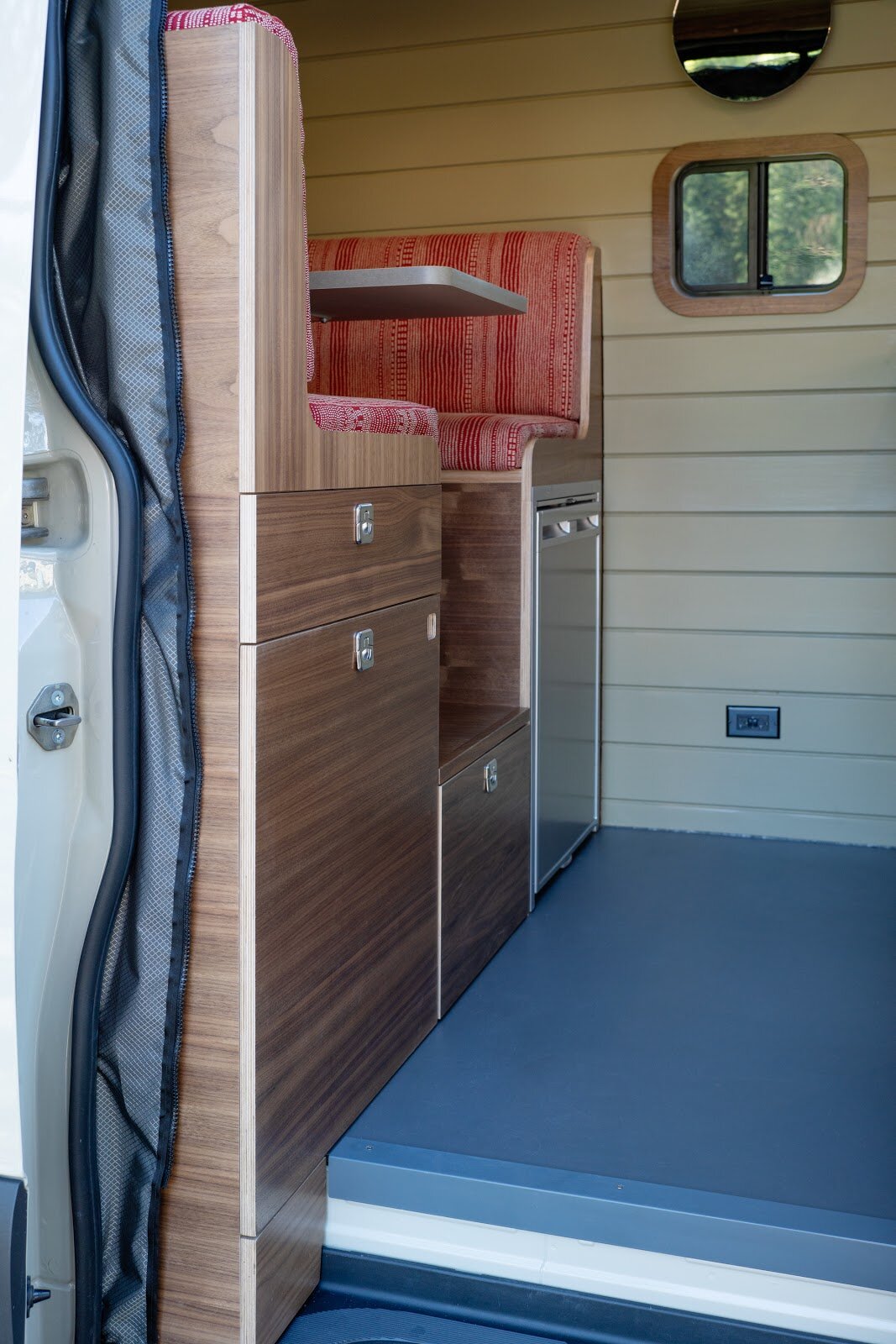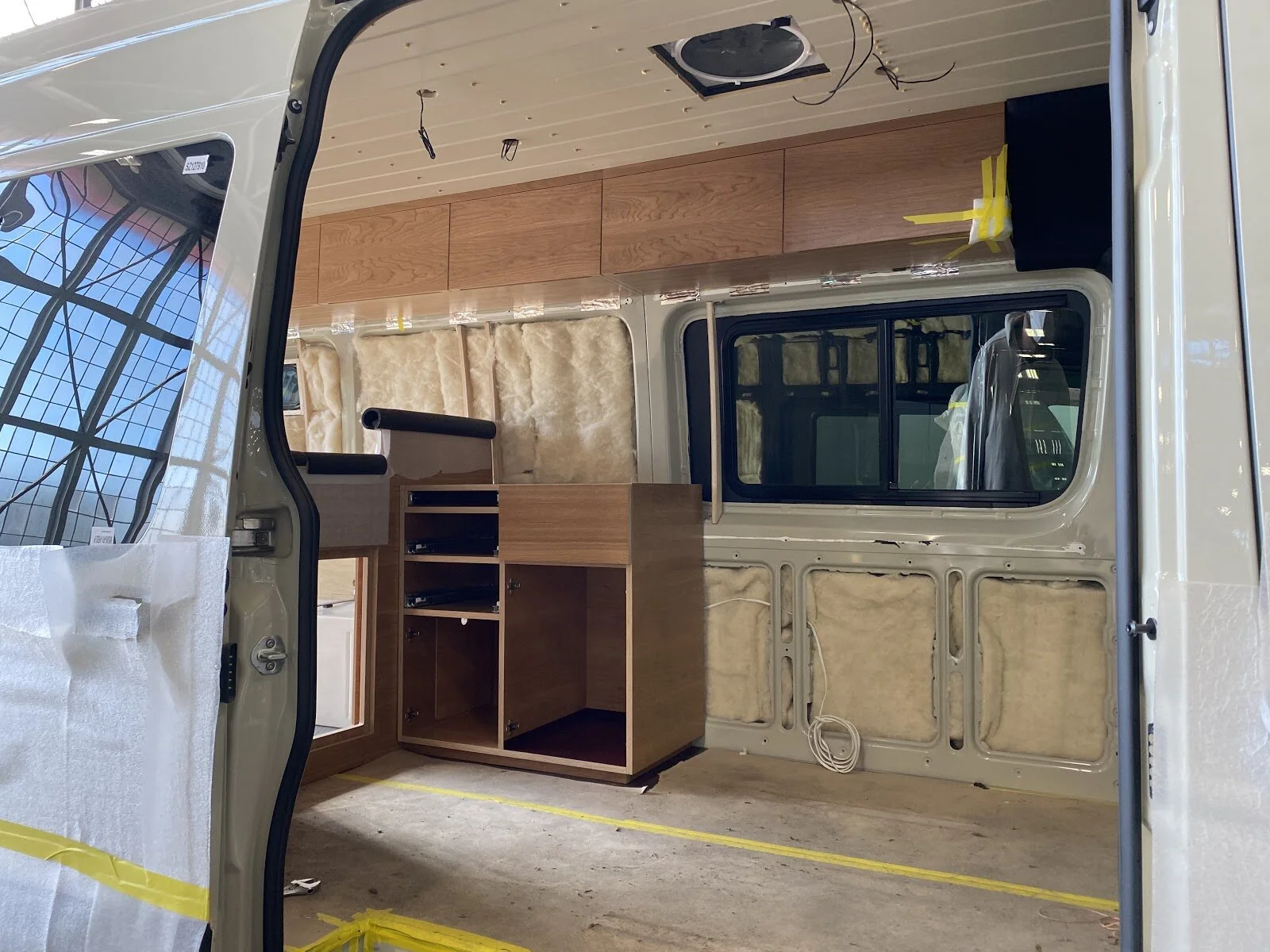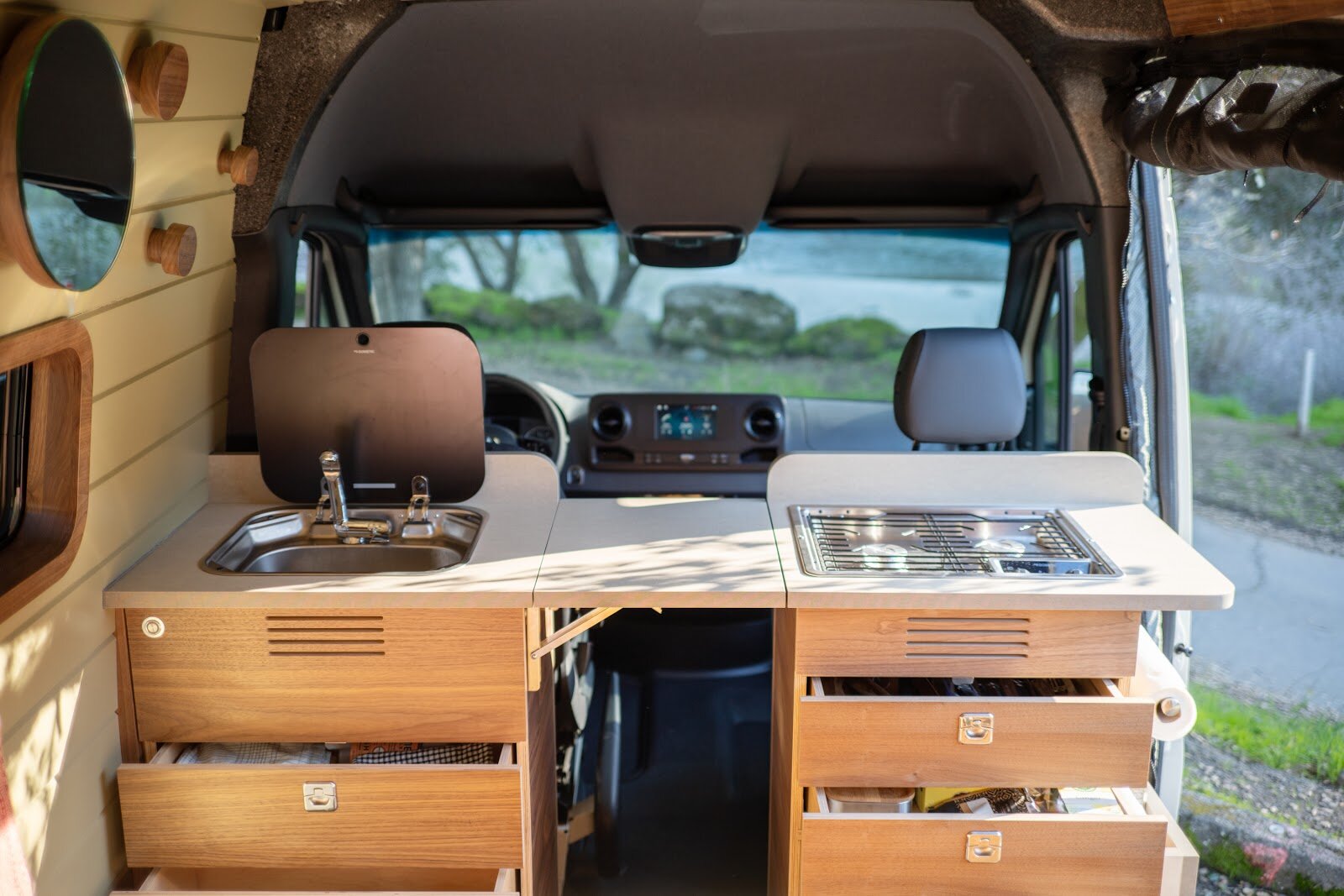How to Build a Green Camper Van
People who recreate in natural spaces regularly are significantly more likely to care about the environment and to take action to protect it. Camper van owners tend to be among the most active outdoor enthusiasts, and their vans are the tool that allows them to spend time in the beautiful natural locations they love the most.
Unlike the culture of motorhome or airstream camper trailer owners, custom Sprinter vans enthusiasts are all about getting out on road trips and immersing themselves in the outdoors. While people towing large travel trailers to RV parks are often simply looking to get away from home without sacrificing any comforts, most Sprinter van owners want to go “glamping” off-grid in beautiful and remote locations.
There are opportunities in several areas of a Sprinter camper van build to use green materials, but many conversion companies and individuals opt to use cheap materials that are harmful to the earth and to human health. Addressing environmental issues is a task that each of us must choose to take on. As lovers of the outdoors, it is the camper van community’s responsibility to make environmentally-conscious choices - including, but not limited to, the materials that go into their vans.
Photo by Muse & Co. Outdoors
Eco-Friendly Camper Van Flooring
Depending on your floorplan, flooring tends to be one of the first materials to go into a camper van build, and it’s also a ‘make it or break it’ decision point when it comes to the sustainability of a camper van build. Many flooring options contain toxic compounds or natural materials that are harvested unsustainably.
Flooring in recreational vehicles gets put through the wringer, with exposure to rapid temperature swings, lots of heavy foot traffic, and plenty of dirt and grime. Most van owners and builders aren’t willing to compromise on performance or appearance just to select a flooring material that is more eco-friendly.
Fortunately, flooring options exist that are both easy on the planet and able to meet the demands of a camper van environment. Muse & Co. Outdoors uses Marmoleum flooring in all of its builds. Marmoleum is a durable flooring material derived from linseed oil, which comes from flax seeds.
No toxins are used or produced during the Marmoleum manufacturing process. Like most environmentally-friendly building materials, Marmoleum is also non-toxic for humans and releases zero harmful gasses or chemicals. Marmoleum also repels dust and has antibacterial properties, making it a better option for sanitary purposes. Finally, Marmoleum is extraordinarily durable - and thanks to the curing process of the linseed oil, it gets more durable and tougher over time.
Photo credit: Muse & Co. Outdoors
Sustainably Harvested Lumber for Camper Vans
Wood is used extensively in most camper van builds. Just because wood comes from the earth doesn’t make it a green material. It’s critical to be conscious of how the wood used in your Sprinter van build is sourced.
Muse & Co. Outdoors uses sustainably harvested woods throughout our builds. There is no difference in quality or durability between sustainably-harvested lumber and lumber that is harvested using methods that harm the earth. Our shiplap siding is made exclusively from FSC-Certified pine wood.
If, like most camper van owners, you love to hike, bike, or otherwise enjoy the beauty of the America’s expansive forests, then you should also care about protecting them. Buying sustainably harvested lumber is a great way to avoid and actively fight against harmful logging practices such as clear-cutting.
Photo by Muse & Co. Outdoors
Green Insulation Options for Camper Vans
Insulation is an essential part of any camper van build, and it’s somewhere you can easily make a big impact on the eco-friendliness of your rig. There are insulation options that are 100% renewable and sustainable, and there are others that are toxic to both the planet and to humans.
A camper van is a demanding environment that requires a high-quality insulation material capable of regulating both temperature and moisture. Fortunately, such a material exists that is also great for the planet and for your health. Muse & Co. Outdoors vans use Havelock Wool Insulation throughout the entire build.
Havelock Wool checks all the boxes when it comes to camper van insulation properties. It is fire-resistant, noise-mitigating, naturally moisture-regulating, and it is an extremely effective and efficient insulator. Plus, Havelock Wool contains zero chemicals or toxins, and it is harvested in a completely renewable, cruelty-free manner.
Photo credit: Muse & Co. Outdoors
Other Important Materials for Camper Vans
There are opportunities to improve the sustainability of a camper van in virtually every area of the build. Choosing low or no-VOC paints and finishes is an important way to protect the health of both the environment and the people who spend time in the van. Muse & Co. Outdoors uses Benjamin Moore Regal Select Zero-VOC paints. The wood cabinetry in our builds is finished using a UV-cured no-VOC finish.
Even materials like countertops can work to support, rather than degrade, our environment. Muse & Co. Outdoors vans utilize Paperstone countertops, which are derived from recycled paper products and non-petroleum resin.
Your electrical system can be made of certified green components, too. Our vans come equipped with solar panels and lithium batteries which improve energy efficiency by harvesting the sun’s energy, all while promoting growth in the green energy sector.
If you’re looking for an eco-friendly Sprinter camper van, check out Muse & Co. Outdoors. Our details page has more information about the materials used throughout our vans, and our Build My Van tool is a great way to visualize your Muse & Co. Outdoors van.




